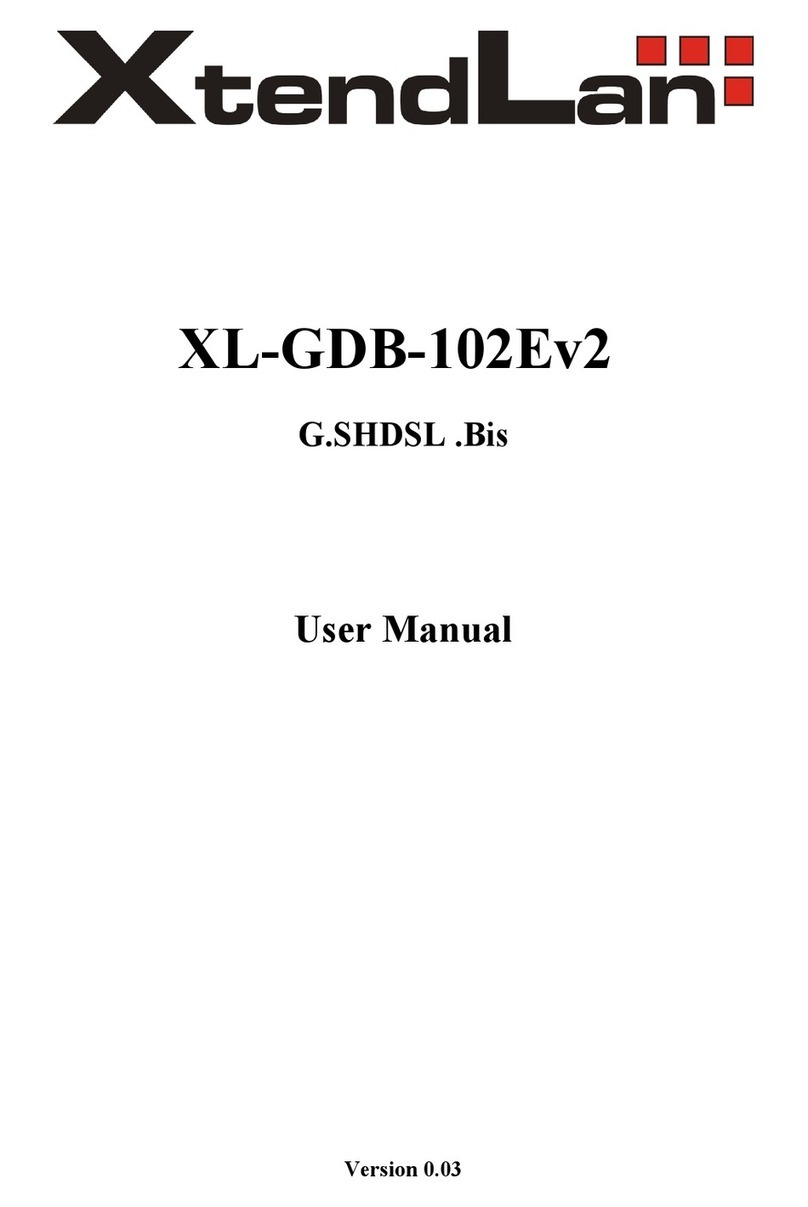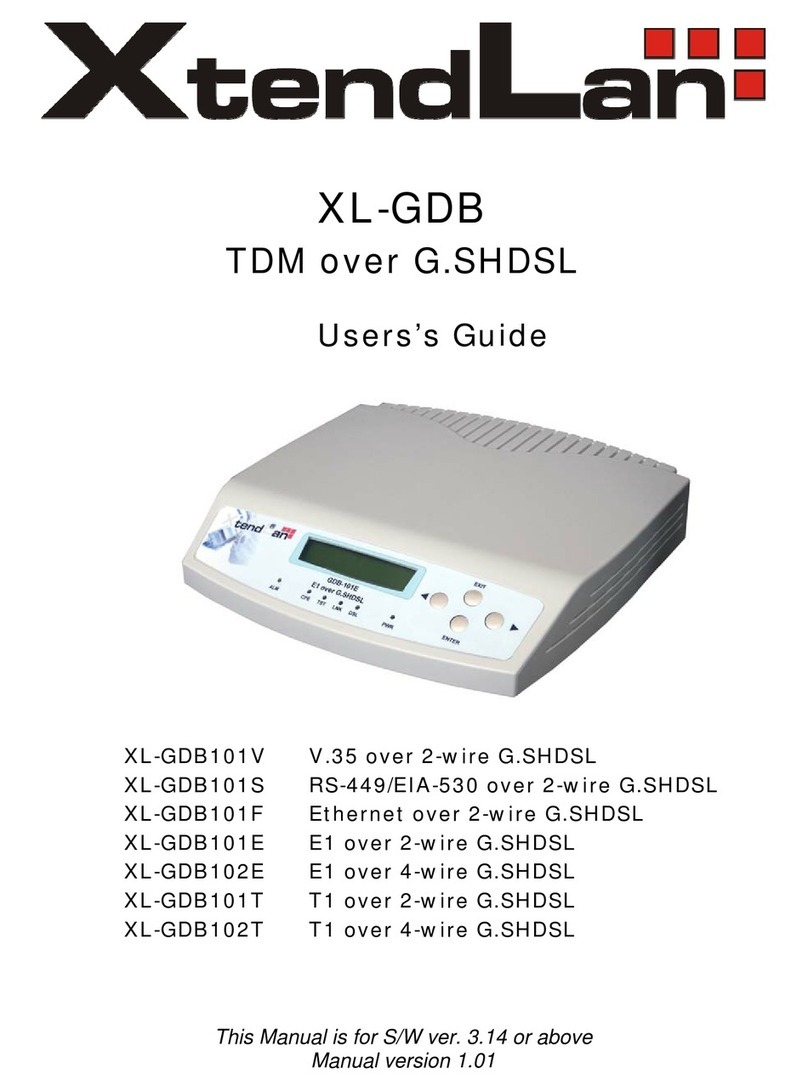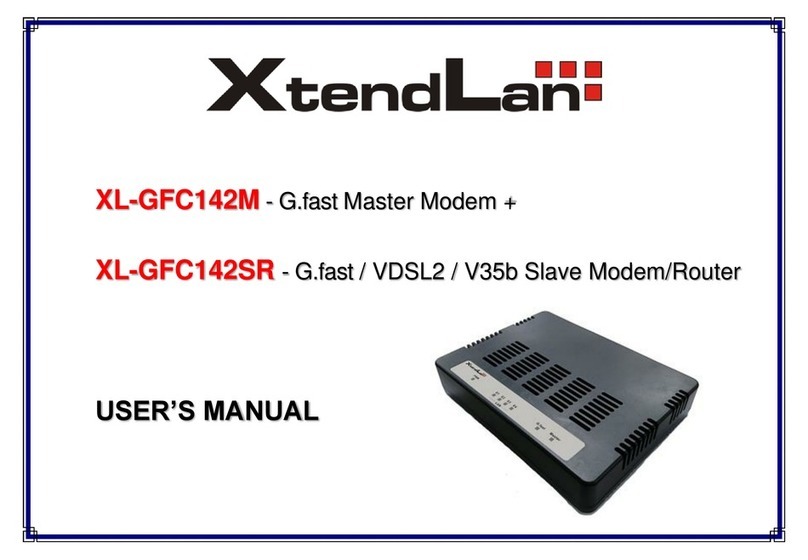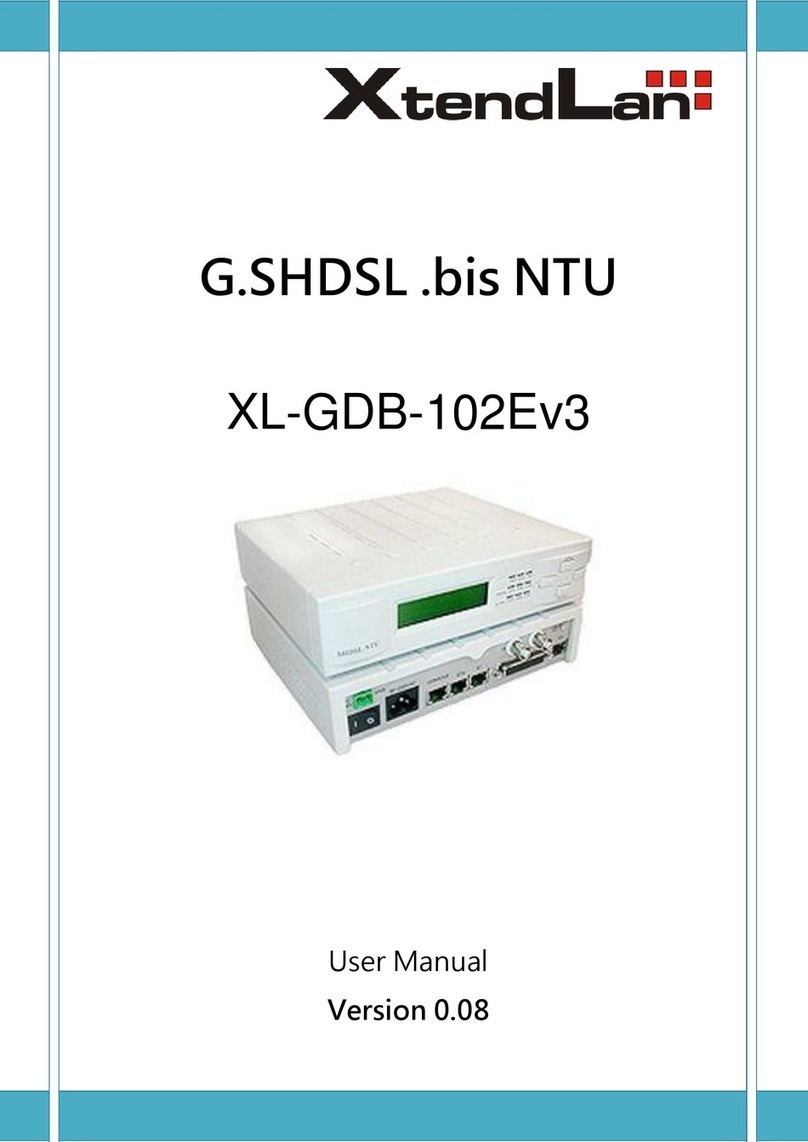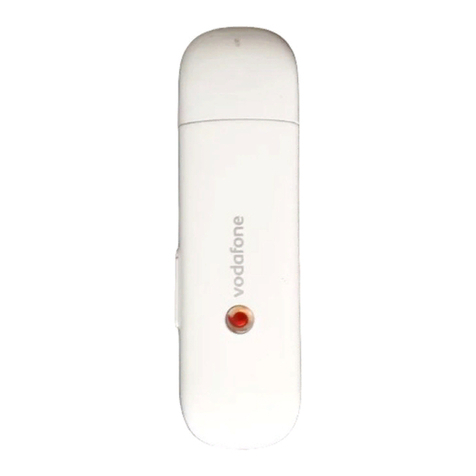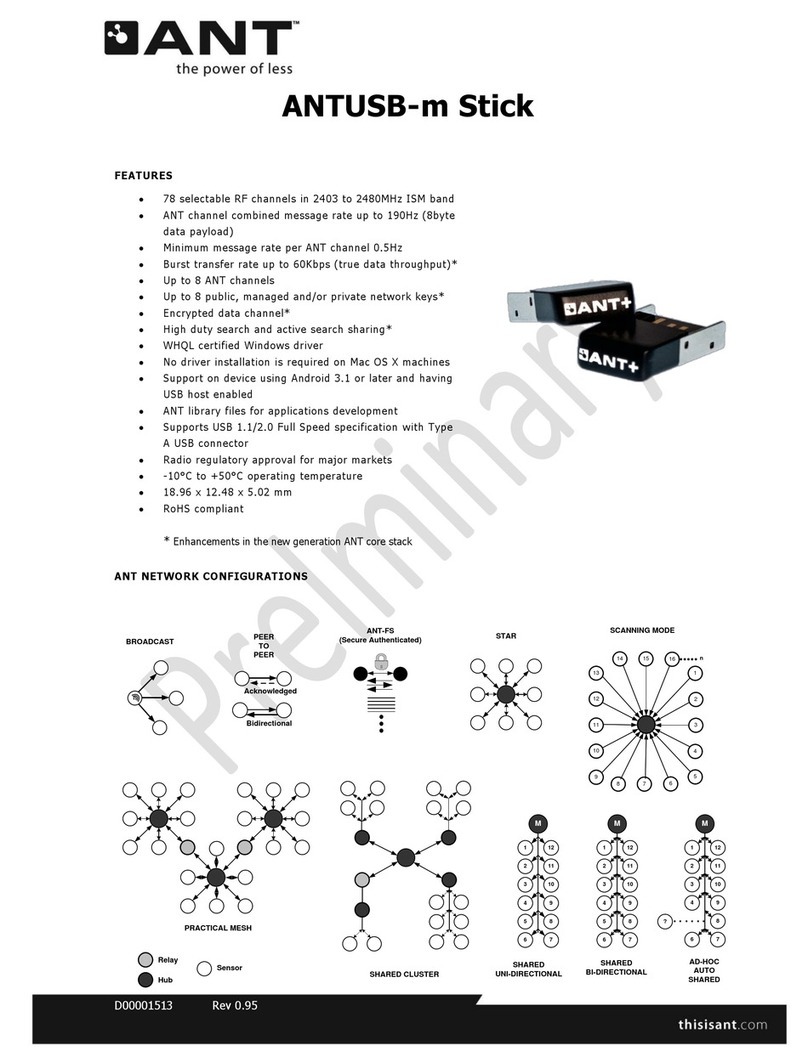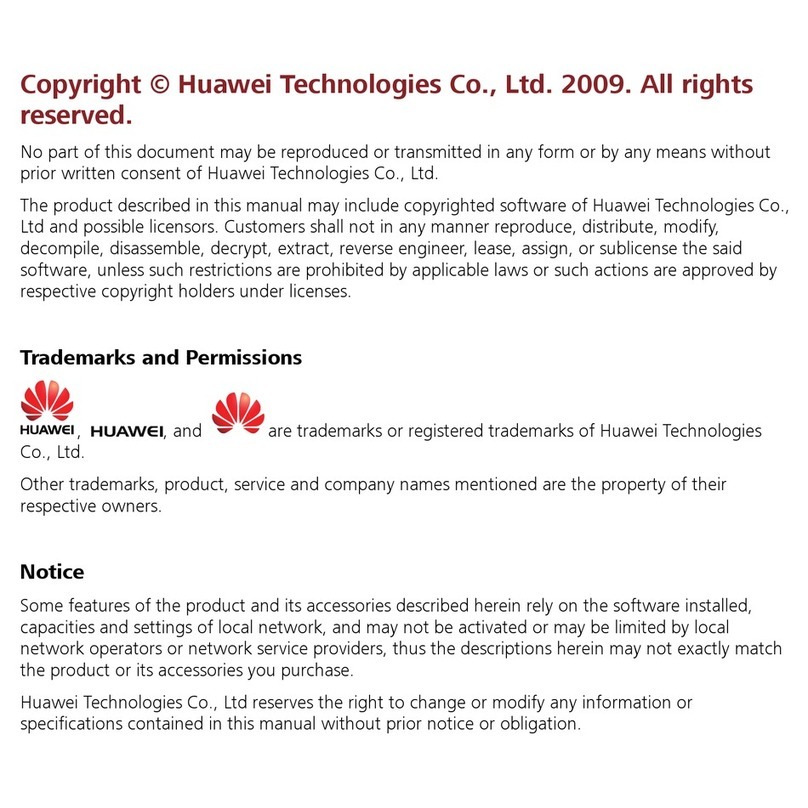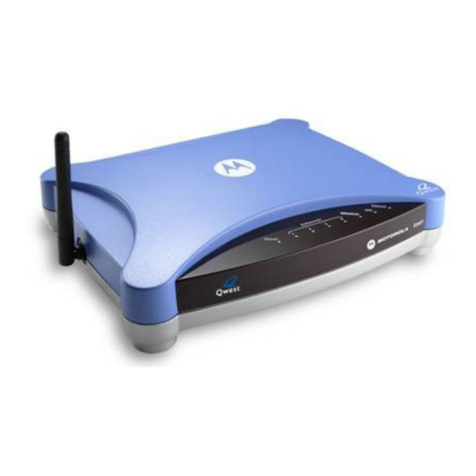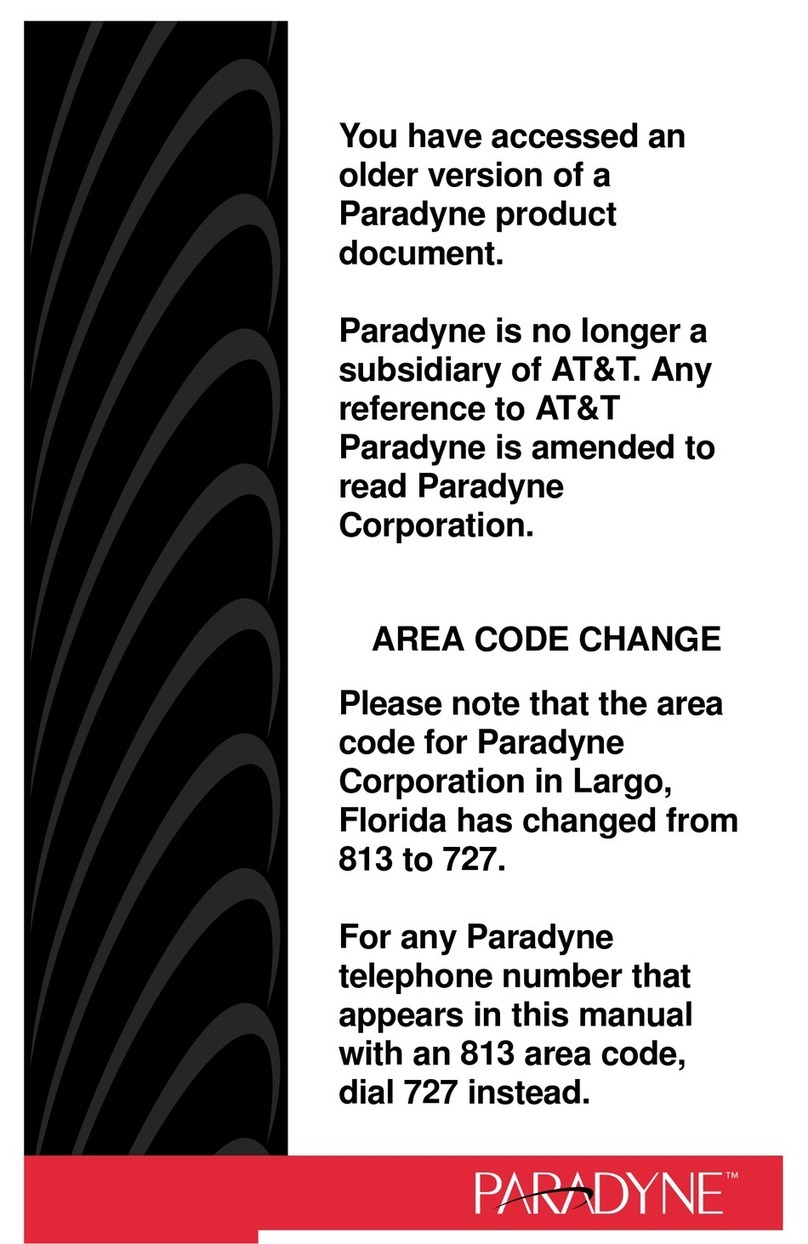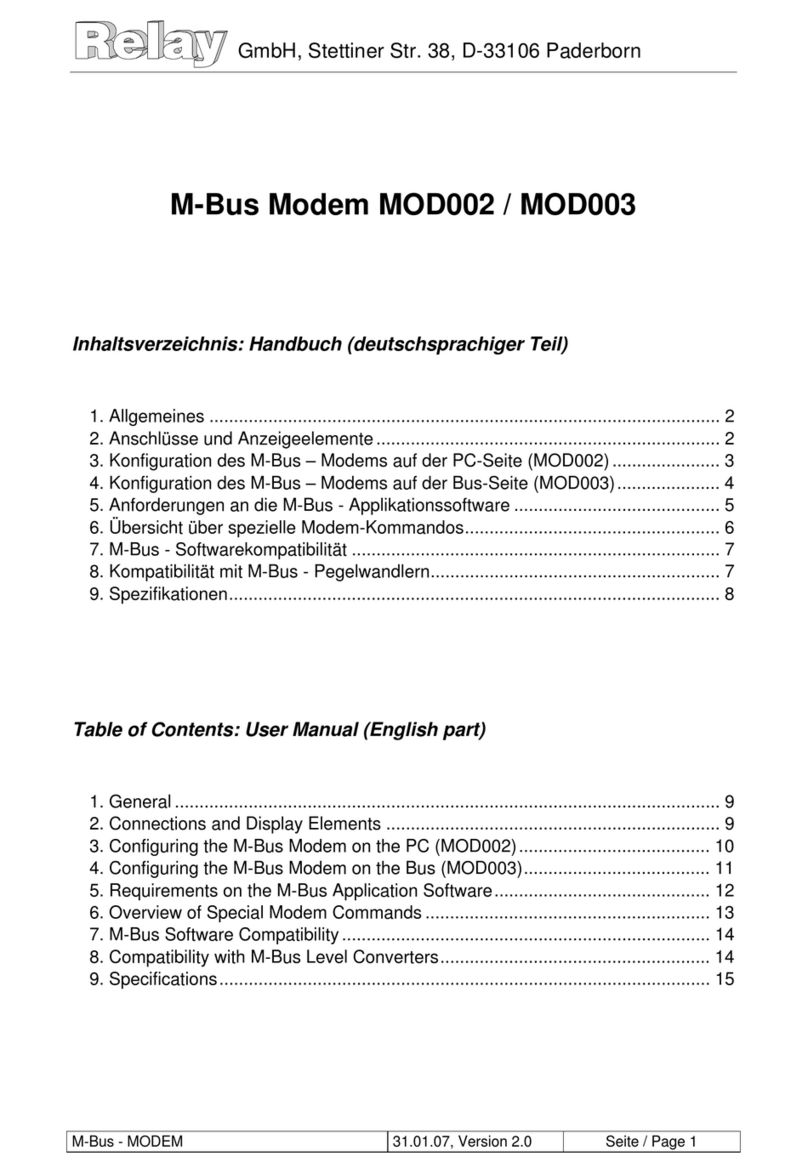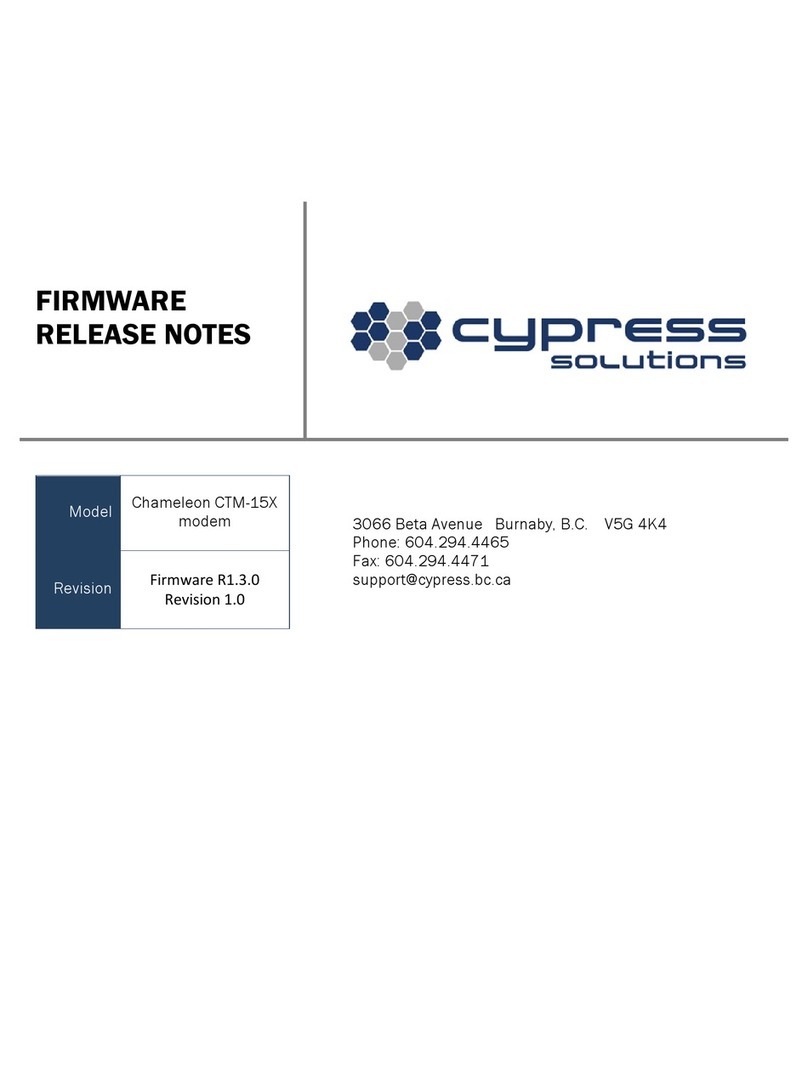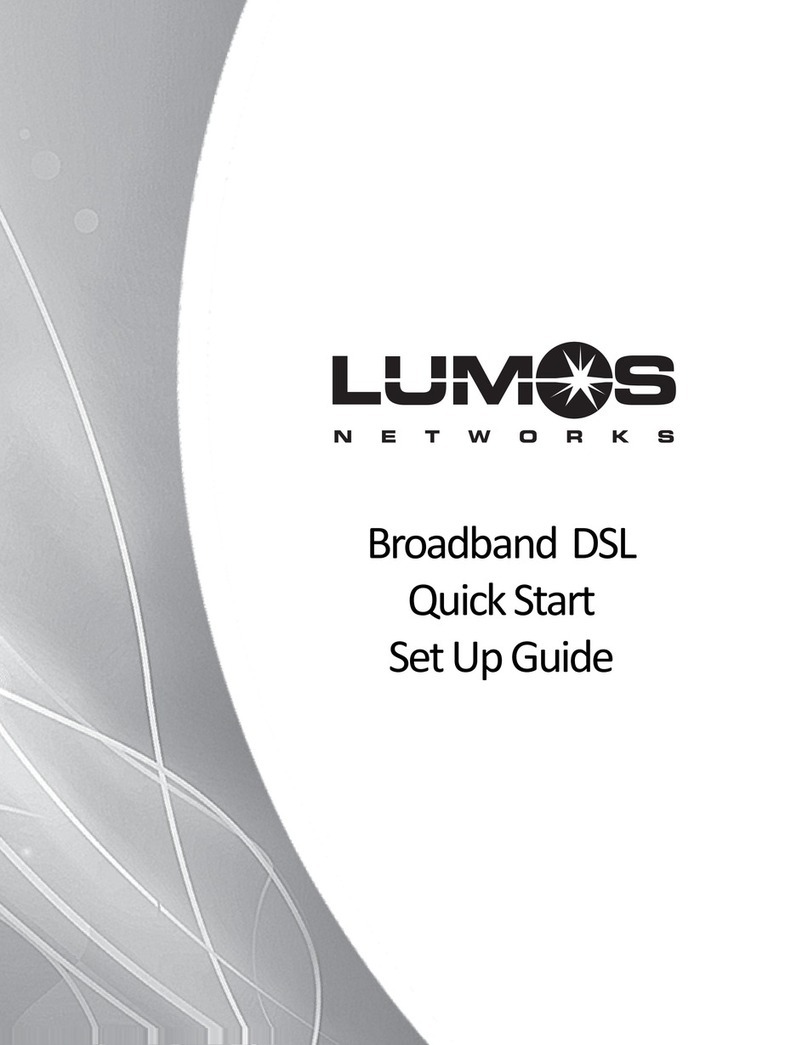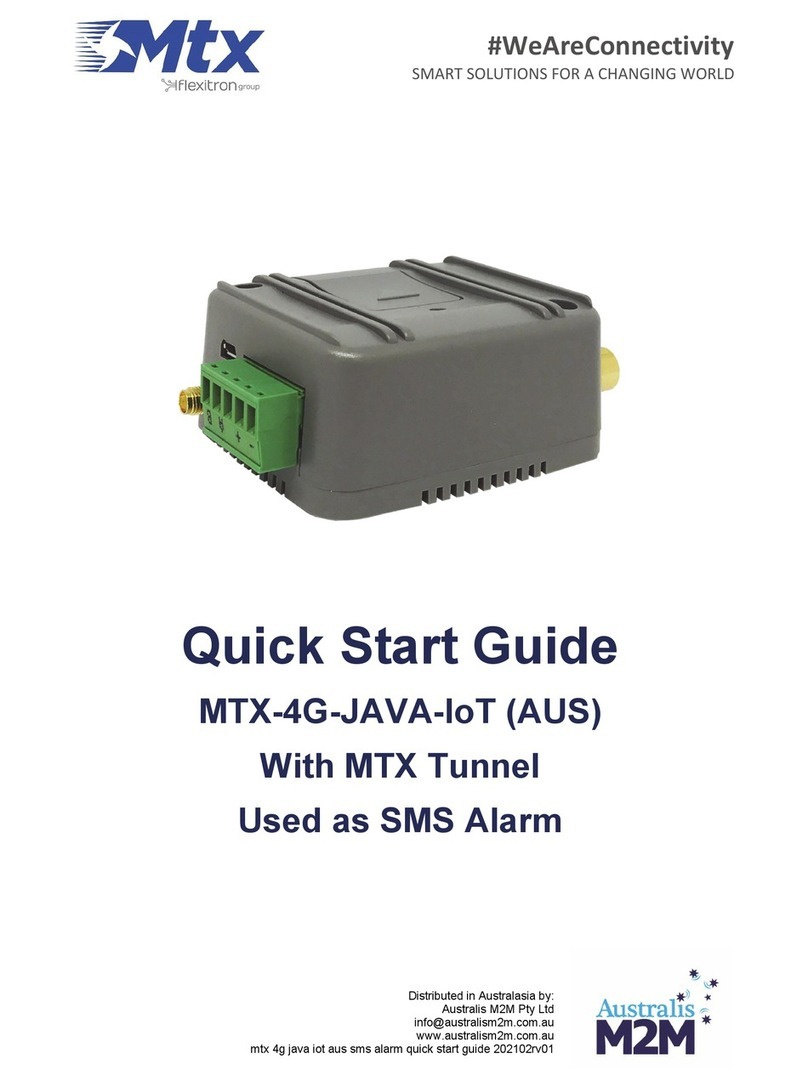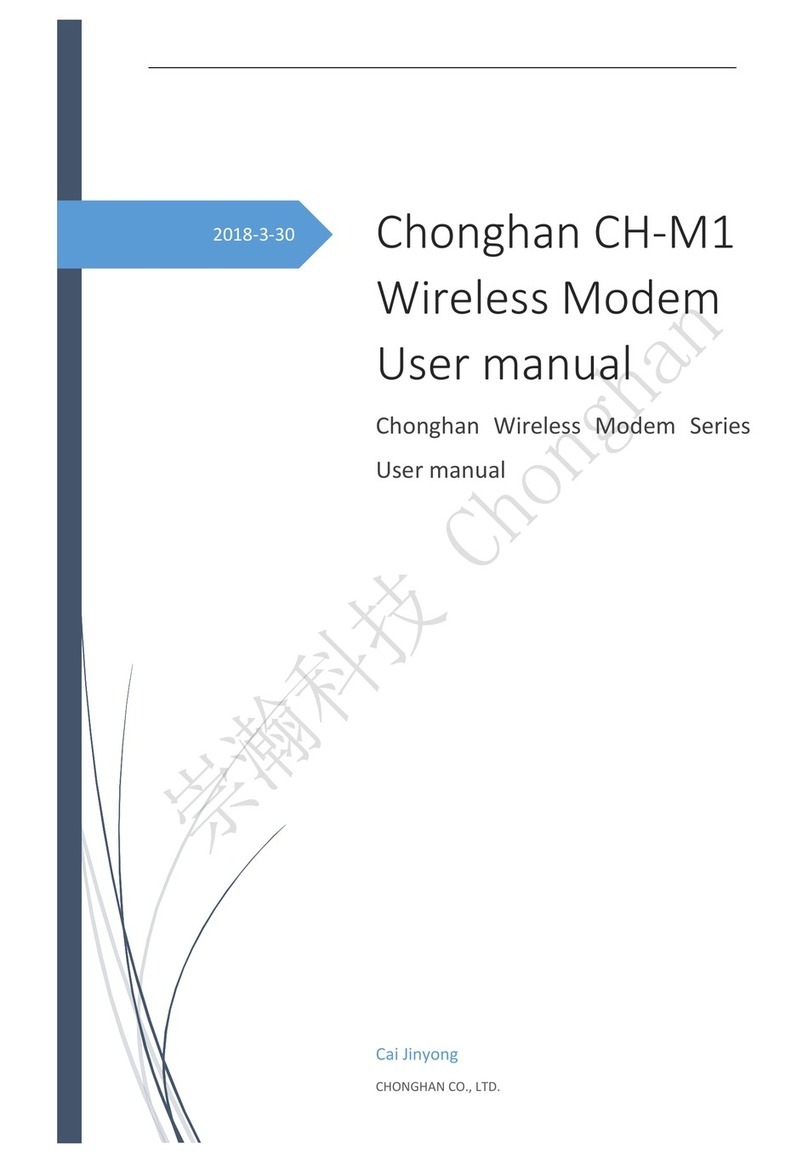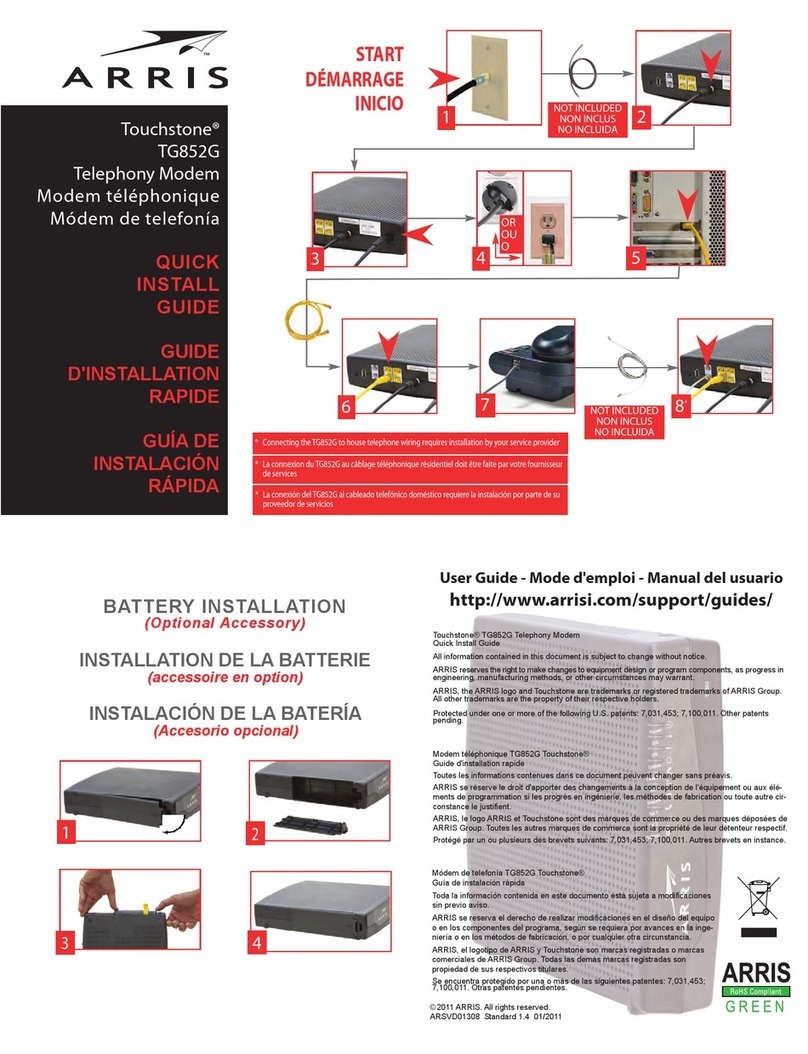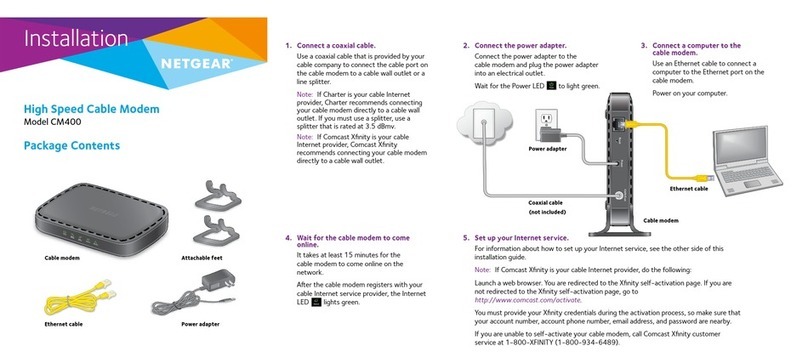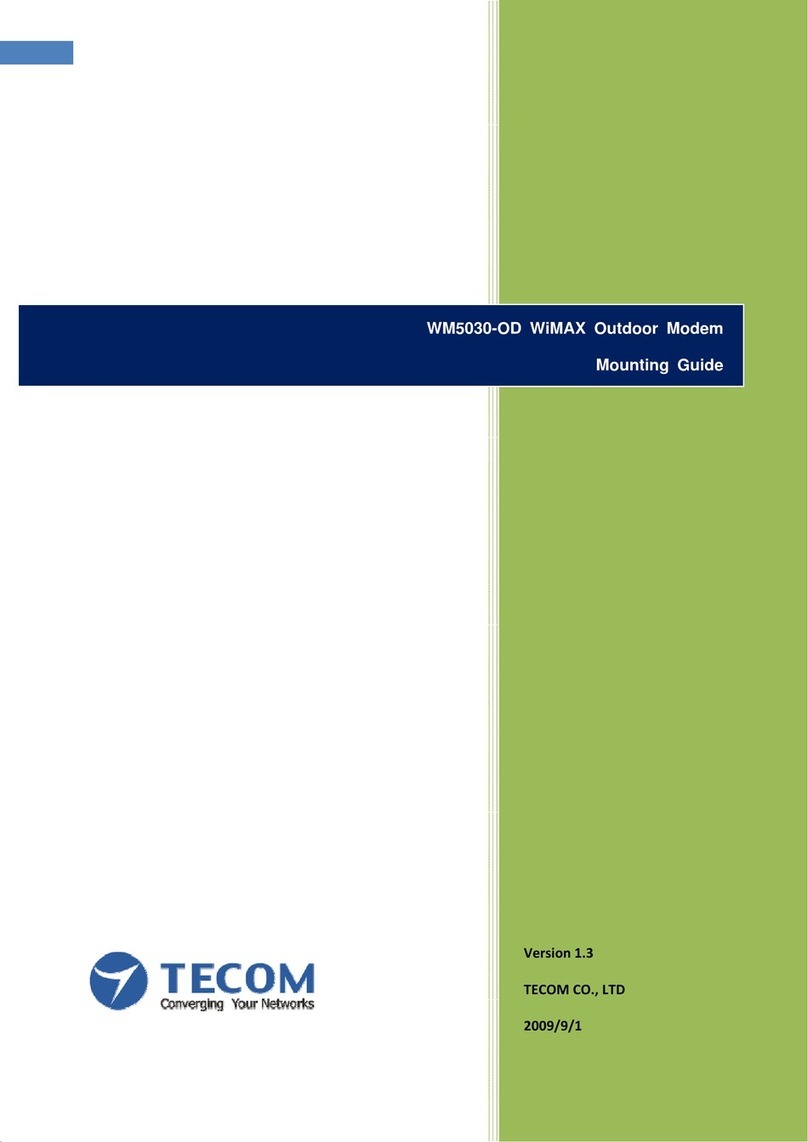XtendLan XL-VCF104M User manual

XL-VCF104M (CO)
XL-VCF104S (CPE)
VDSL2 CO/CPE modem
User’s Guide

ADSL-like long reach (LR) performance: ADSL-like long reach performance is one of the key advantages of VDSL2.
systems, unlike VDSL1 systems, are not limited to short loops or MTU/MDUs only, but can also be used for medium
VDSL2 Point to Point Solution
VDSL2 (Very-High-Bit-Rate Digital Subscriber Line 2, ITU-T G.993.2 Standard) is an access technology that exploits the
existing infrastructure of copper wires that were originally deployed for POTS services. It can be deployed from central
LR-VDSL2 enabled systems are capable of supporting speeds of around 1-4 Mbit/s (downstream) over distances of 4 to
interactive gaming, VDSL2 enables operators and carriers to gradually, flexibly, and cost efficiently upgrade existing
ITU-T G.993.2 VDSL2 is the newest and most advanced standard of DSL broadband wireline communications. Designed
ITU-T G.993.2 (VDSL2) is an enhancement to G.993.1 VDSL that permits the transmission of asymmetric and symmetric
to support the wide deployment of Triple Play services such as voice, video, data, high definition television (HDTV) and
VDSL2 deteriorates quickly from a theoretical maximum of 250 Mbit/s at 'source' to 100 Mbit/s at 0.5 km and 50 Mbit/s at
5 km, gradually increasing the bit rate up to symmetric 100Mbit/s as loop-length shortens. This means that VDSL2-based
1 km, but degrades at a much slower rate from there, and still outperforms VDSL. Starting from 1,6 km its performance is
(Full-Duplex) aggregate data rates up to 200 Mbit/s on twisted pairs using a bandwidth up to 30 MHz.
1
offices, from fibre-fed cabinets located near the customer premises, or within buildings.
xDSL-infrastructure.
range applications.
equal to ADSL2+.

CONTENT
1.Unpacking Information ................................................................................... 3
Check List.......................................................................................................... 3
2. Installation ..................................................................................................... 4
Hardware Installation......................................................................................... 4
2.1 Pre-installation Requirements.................................................................4
General Rules...............................................................................................5
Connecting the VDSL2 CO&CPE Modem ....................................................5
3. Hardware Description.................................................................................... 7
4. Setup the VDSL2 CO&CPE Modem by Web Browser................................ 10
4.1 Login. ....................................................................................................10
4.2 Select the Menu Level .......................................................................... 11
4.3 Select Advanced Setup.........................................................................12
4.4 Select LAN............................................................................................13
5. Building a VDSL2 System .................................................................………16
5.1 Connect the CPE and the CO to the Line.............................................16
5.2 Connect the CPE and the CO to LAN Devices.....................................17
5.3 Run Demos and Tests...........................................................................17
6. Operating the VDSL2 System ..................................................................... 18
6.1 Configuration Settings ..........................................................................18
6.2 Status Displays .....................................................................................26
7. Configuration Interface of the Router .................................................. …….31
7.1 Logging on to the VDSL2 CO&CPE Modem ........................................31
7.2 Configuration Menu for Administrators .................................................32
Appendix A: Product Features & Specification................................................ 68
Appendix B: Compliance and Safety Information............................................ 70
2

1.Unpacking Information
Check List
Carefully unpack the package and check its contents against the checklist.
Package Contents
●
VDSL2 Modem (VDSL2 CO Modem / VDSL2 CPE Modem)
●
Two plastic feet
●
User’s Manual
●
AC to DC 12V Power Adapter
●
RJ-45 cable
●
RJ-11 cable
Please inform your dealer immediately for any missing, or damaged parts. If possible, retain the carton,
including the original packing materials, Use them to repack the unit in case there is a need to return for
repair.
3

2. Installation
Hardware Installation
This chapter describes how to install the VDSL2 CO&CPE MODEM and establishes network connections. You
may install the VDSL2 CO&CPE MODEM on any level surface (e.g, a table or shelf). However, please take note of
the following minimum site requirements before you begin.
2.1 Pre-installation Requirements
Before you start actual hardware installation, make sure you can provide the right operating environment, including
power requirements, sufficient physical space, and proximity to other network devices that are to be connected.
Verify the following installation requirement:
●
Power requirements: DC12V/1A or above.
●
The VDSL2 CO&CPE MODEM should be located in a cool dry place, with at least 10cm/4in of space at the front
and back for ventilation.
●
Place the VDSL2 CO&CPE MODEM out of direct sunlight, and away from heat sources or areas with a high
amount of electromagnetic interference.
●
Check if network cables and connectors needed for installation are available
4

General Rules
Before making any connections to the VDSL2 CO&CPE MODEM, note the following rules:
●
Ethernet Port (RJ-45)
All network connections to the Modem Ethernet port must be made using Category 5 UTP for 100Mbps;
Category 3,4 UTP for 10Mbps
No more than 100 meters of cabling may be use between the MUX or HUB and an end node.
●
Phone Port (RJ-11)
All Phone set connections to the RJ-11 Port made using 24~26 Gauge phone wiring.
Connecting the VDSL2 CO&CPE MODEM
The VDSL2 CO&CPE MODEM can be controlled by a PC, henceforth, called the "Control PC". For this purpose, you
needa PC with an Ethernet network interface and a DB-9 RS232 serial interface. Two programs are required: A Web
browser is mandatory and a terminal program should be available optionally. The board has several connectors.
4 Ethernet RJ45 jacks (connect LAN devices to route); the Auto MDIX feature of the ports switches automatically
between MDI and MDI-X (MDI = Media Dependant Interface), therefore straight Ethernet cables can be used.
2 x RJ11 jack (LINE Port is for connects VDSL client side to Line Interface, Phone port is for connects phone set or
FAX machine)
1 x Console port (monitoring, access to operating system via shell for firmware downloads, starting drivers and web etc.,)
1 Power Supply (as described above)
5

Figure 2.1 VDSL2 Point to Point application
6

3. Hardware Description
This section describes the important parts of the VDSL2 CO&CPE MODEM. It features the front indicators and rear
connectors.
Front Indicators
The following figure shows the front panel.
Figure Chapter 3.1 VDSL2 CO Modem
Figure Chapter 3.2 VDSL2 CPE Modem
7

Six LED indicators.
At a quick glance of the front panel, it will be easy to tell if the Modem has power, signal from its Ethernet
RJ-45 port or there is phone line signal RJ-11port
Front Indicators
LED Description and Operation
The Modem has three LED indicators.
LEDs Status Descriptions
PWR
(Ready LED)
Steady
Green
It will light up (ON) to show that the product is
power good, and system reset OK.
E1~E4
(Ethernet
LED)
Steady
Green
Flashing
(LINK/ACT)
Each RJ-45 station port on the Ethernet is
assigned an LED light for monitoring port “Good
Linkage”. LED is normally OFF after the powe
r
on operation, but will light up steadily to show
good linkage and flashing to show data
transmission.
Link
(VDSL LED)
Steady
Green
RJ11 station port on the VDSL is assigned an
LED light for monitoring port “Good Linkage”.
LED is normally OFF after the power on
operation, but will light up steadily to show good
linkage.
8

Rear Panel
The following figure shows the rear connectors
Figure Chapter 3.3 Rear Connectors
VDSL2 CO&CPE MODEM Rear Connectors
Connectors Description Type
Line For connecting to the VDSL Modem Using
a RJ-11 cable
RJ-11
Phone For connecting to the telephone or FaxISDN
Modem RJ-11
E1~E4 For connecting to a Ethernet equipped device RJ-45
Console port For connecting to PC with RS-232 serial
port over a D-SUB Cable
RS-232
Power On
1. Check the adapter is properly connected.
2. Verify the power LED is steadily on.
9

4. Setup the VDSL2 CO&CPE MODEM by Web Browser
The VDSL2 CO&CPE MODEM provides a built-in web browser. You can use Web browser to configure the VDSL2
CO&CPE Modem. First please input the IP address 192.168.16.249 (VDSL2 CO Modem) and 192.168.16.250
(VDSL2 CPE Modem) in the Web page.
4.1 Login.
The password is “admin“.
Figure 4.1 Login
10

4.2 Select the Menu Level
There is a simple Setup Wizard for end users and an Advanced Setup. The focus of this manual is on the Advanced
Setup.
Figure 4.2 Select the Advanced Setup in the Entry Screen
11

4.3 Select Advanced Setup
Select the Advanced Setup. The menu below will be used frequently. As an exercise and an example now the IP
address will be set.
Figure 4.3 Advanced Setup
Attention: The settings in the following Chapter 4.4 only need to be performed in order to change LAN settings. Such
a change may be necessary when connecting the VDSL2 CO&CPE Modem for the to a new control PC
and/or in order to turn the IP address changed via a shell command into a default address for the next
restart of the board.
12

4.4 Select LAN
The menus below will not be used very often. But when connecting the VDSL2 CO&CPE Modem to a new control
PC, you may want to go through the following steps in order to make the IP address previously set by ifconfig in the
terminal console permanent. Or on some later occasion you may want to change it again without using the console.
Then the menu below will help you too.
In order to set the IP address, click on “LAN Settings”.
Figure 4.4 LAN menu
13

4.4.1 Select LAN Settings and set the IP Address
The form below is used to change the IP address of the LAN port “adm0” in the VDSL2 CO&CPE Modem.
The proposed IP address either is the default address of adm0 or it is the address changed by an ifconfig
command via the shell running in the terminal.
The Subnet Mask display can be ignored.
In case the DHCP checkbox is checked, some additional data and options will be on display (see Chapter
6.2.5.1 on Page 50). The DHCP server is not required to work with VDSL2 in a lab environment. It is
recommended to uncheck the box if it is not unchecked already.
Figure 4.4.1 LAN Settings
14

Now the IP address either may be changed or left as it is. If it has been changed in the form or after it has been
changed using the ifconfig command via the shell running in the terminal, it needs to be stored permanently Hit
the “APPLY” button in order to make the displayed IP address new default address.
4.4.2 Restart the Settings Dialog
After the “APPLY” button has been hit, the displayed IP address “adm0” port will be stored in a non volatile
memory on the VDSL2 CO&CPE Modem. Also, the Ethernet link between the control PC and the VDSL2
CO&CPE Modem will be re-initialized – even if the IP address has not been changed. Refresh the display of
the HTTP browser running on the control PC and login again.
Figure 4.4.2 Login after Storing the IP Address as Default Value
The VDSL2 CO&CPE Modem now is prepared to be controlled by the control PC.
15

5. Building a VDSL2 System
First a quick overview over a complete setup:
Figure 5 VDSL2 Application
5.1 Connect the VDSL2 CO Modem and the VDSL2 CPE Modem to the Line
The objective for VDSL2 is passing data over a twisted pair cable at high speed. In the setup, either such a cable
connects the VDSL2 CO Modem and the VDSL2 CPE Modem, or a line simulator or any other hardware
representation of a cable network, with or without noise injection and crosstalk simulations.
16

5.2 Connect the VDSL2 CO Modem and the VDSL2 CPE Modem to LAN Devices
In the setup, usually a Ethernet tester serves as representation of the LAN side as well as representation of the
WAN side.
5.3 Run Demos and Tests
The Ethernet tester may send data downstream as well as upstream. It also receives the data in order to check
the integrity of the data transmission.
Different data rates can be tested under different line conditions.
17

6. Operating the VDSL2 System
After the VDSL2 system has been set up, you may want to configure the settings which are related to VDSL2.
Configuration of operation modes, test modes (loop back) and the display of status information is supported by an
graphical user interface.
6.1 Configuration Settings
Configure and start the VDSL2 CO Modem and the VDSL2 CPE Modem.
Configuration: As a minimum configuration, usually selecting the bandplan is required.
See Chapter 6.1.3, Profile Configuration.
Next, both sides should be activated from the web interface.
See Chapter 6.1.6, Line Activation
The connection status of the link can be monitored.
See Chapter 6.2.1, Line Status
18

6.1.1 Channel Configuration
Figure 6.1.1 Channel Configuration Menu
19
This manual suits for next models
1
Table of contents
Other XtendLan Modem manuals
